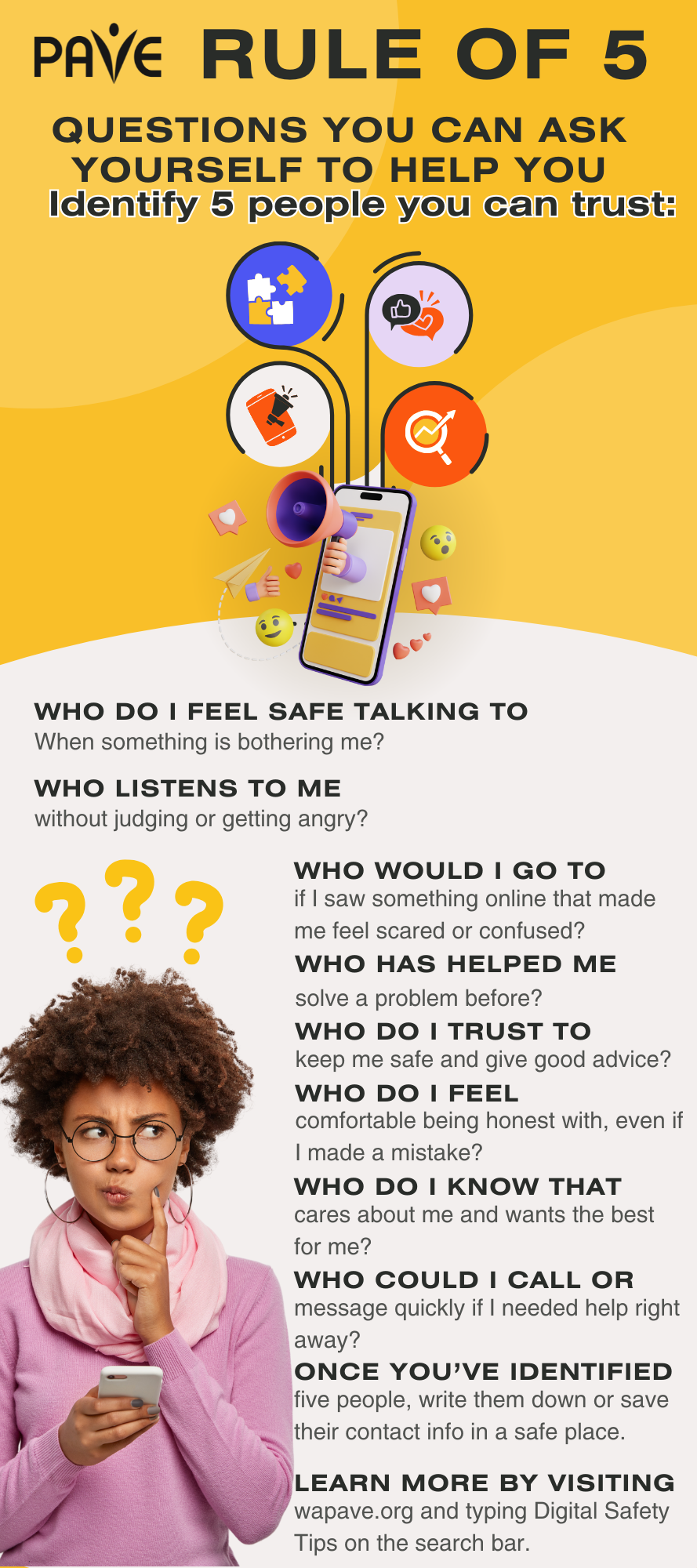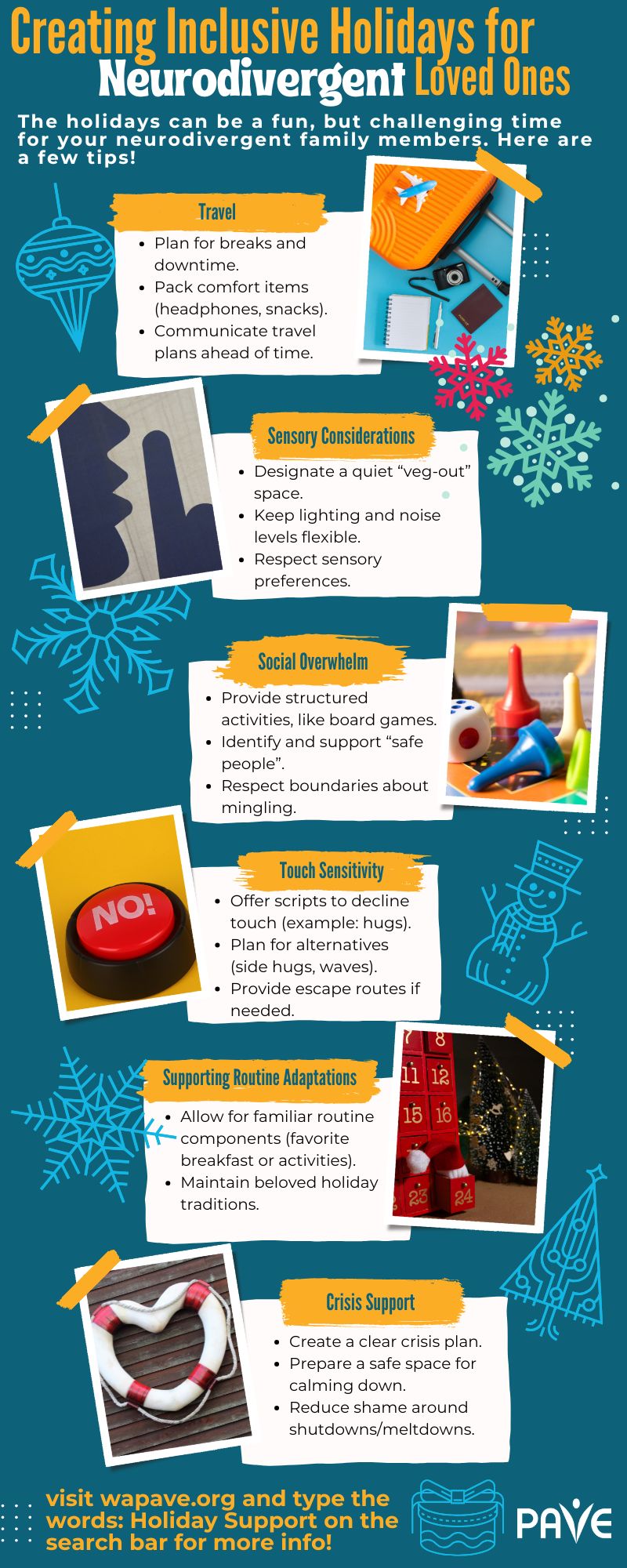Thinking about how you use social media and screens can help you make better choices for your mind, body, and relationships. When you take time to notice how you feel, what you see, and how much time you spend online, you can stay in control instead of letting screens take over. Talking with trusted adults and setting goals for your screen time can help you stay safe, feel better, and enjoy the good parts of being online.
Think about Yourself
Your social media accounts are all about you! Think about why you are using social media or other screens. Is your goal to talk to friends, find cool videos, or learn something new? Thinking about your goals and what you like helps you control how you use social media, instead of letting it control you. To better understand your goals, ask yourself:
- What is your goal when you open an app or go online?
- Did you reach your goal, so you can set it down now?
- Are you in control of how you use it, or does it feel like it controls you?
Think about What You See
Consider what you see and read online. What purpose does this have for you? Is it something helpful and interesting, or is it making you feel bad? Sometimes you might see things that are mean or make you feel sad, anxious, or even angry. If you notice that what you’re seeing online is often upsetting or distracting you from important things, maybe it’s time to look for content that helps you feel better. You can control some of what you see online by only following pages that make you feel good, and by unfollowing or muting accounts that post things that upset you or make you feel bad about yourself.
Think about what you see online and ask yourself:
- What kinds of things do you usually look at online?
- What purpose does this content have for you?
- If some content makes you feel bad, are there other things you could look at online that might help you feel better or learn something new?
Think about How You Feel
Think about how you feel and how you use screens when you’re feeling strong emotions. Sometimes we use phones or games to escape negative feelings, but there are other ways to calm down, like talking to people you trust, taking a walk, or making art.
When thinking about how social media makes you feel, ask yourself:
- How does using social media make you feel?
- Does what you see online make you feel good?
- When you’re feeling sad, bored, or stressed, do you often use screens or social media to feel better?
- Are there other ways you can help yourself feel calm that don’t involve a screen?
Think about What Screens Get In The Way Of
Screens shouldn’t stop you from doing homework, seeing friends in person, getting enough sleep, or doing other things. Think about how long you are going to use an app or website and set a clear time limit for yourself. That way, you can reach that time and be able to put your phone down because you planned to stop. To help you set a time limit that works for you, ask yourself:
- How long are you planning to use social media or a screen right now?
- Did you set a clear time to stop using it?
- Does using screens stop you from doing other important things, like homework, spending time with family or friends in person, or getting enough sleep?
Think about Relationships
You can talk with a friend or trusted adult about your online life and how you are feeling about it. By sharing about how you feel about friends online and in real life, you can better understand what purpose connecting online has for you. Talking helps you learn how to use screens safely.
When you think about your friends and family, ask yourself:
- Do you feel comfortable talking to a parent or trusted adult about your online life?
- If something online made you feel uncomfortable or upset, would you feel okay talking to someone about it?
- How do you feel about your friendships online compared to your friendships in real life?
- What purpose does connecting online have for you in your friendships?
Remember, social media should be something that adds to your life—not something that takes away from it.
Identify Your Five
One way to stay safe online is by using the “Rule of 5,” which means having five trusted people you can talk to when something online feels wrong or confusing. These questions can help you identify five people you can trust:
- Who do I feel safe talking to when something is bothering me?
- Who listens to me without judging or getting angry?
- Who has helped me solve a problem before?
- Who would I go to if I saw something online that made me feel scared or confused?
- Who do I trust to keep me safe and give good advice?
- Who do I feel comfortable being honest with, even if I made a mistake?
- Who do I know that cares about me and wants the best for me?
- Who could I call or message quickly if I needed help right away?
Once you’ve identified five people, write them down or save their contact info in a safe place.
Final Thoughts
Taking control of your social media use starts with understanding your goals, feelings, and habits. By reflecting on how, why, and when you use screens, you can make choices that support your well-being and help you stay safe online. Whether you’re setting time limits, curating your feed, or reaching out to trusted people, every small step counts. Keep checking in with yourself, stay curious, and remember—you have the power to shape your digital world in a way that works for you.
Learn More
This self-reflection guide was developed as a practical tool to help implement the strategies outlined in Level Up Your Social Media Game: Digital Safety Tips for Youth and Young Adults with Disabilities. It is designed to encourage thoughtful engagement with the digital safety concepts presented in that article, supporting users in applying them to their own online experiences.
Family caregivers and professionals can learn how to support kids’ health and emotional well-being by helping them use social media safely. A great place to start is the American Academy of Pediatrics’ “5 Cs of Media Use” guides.



